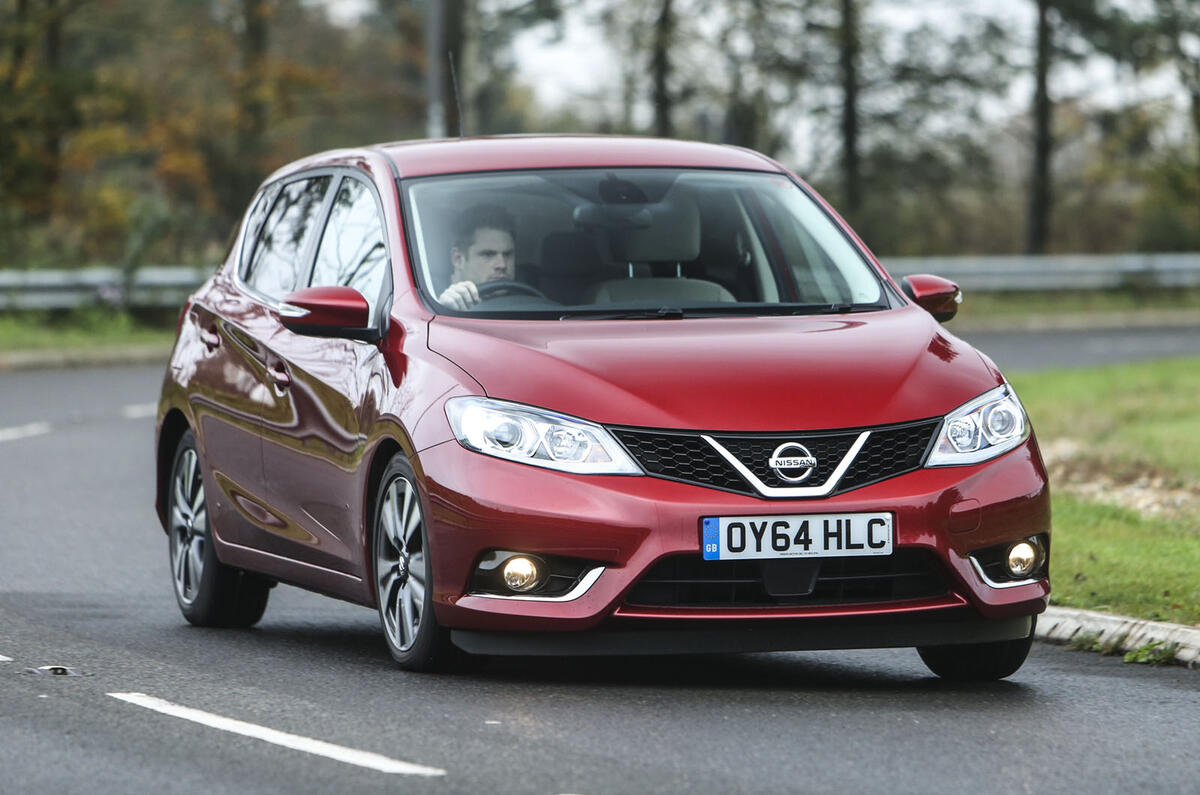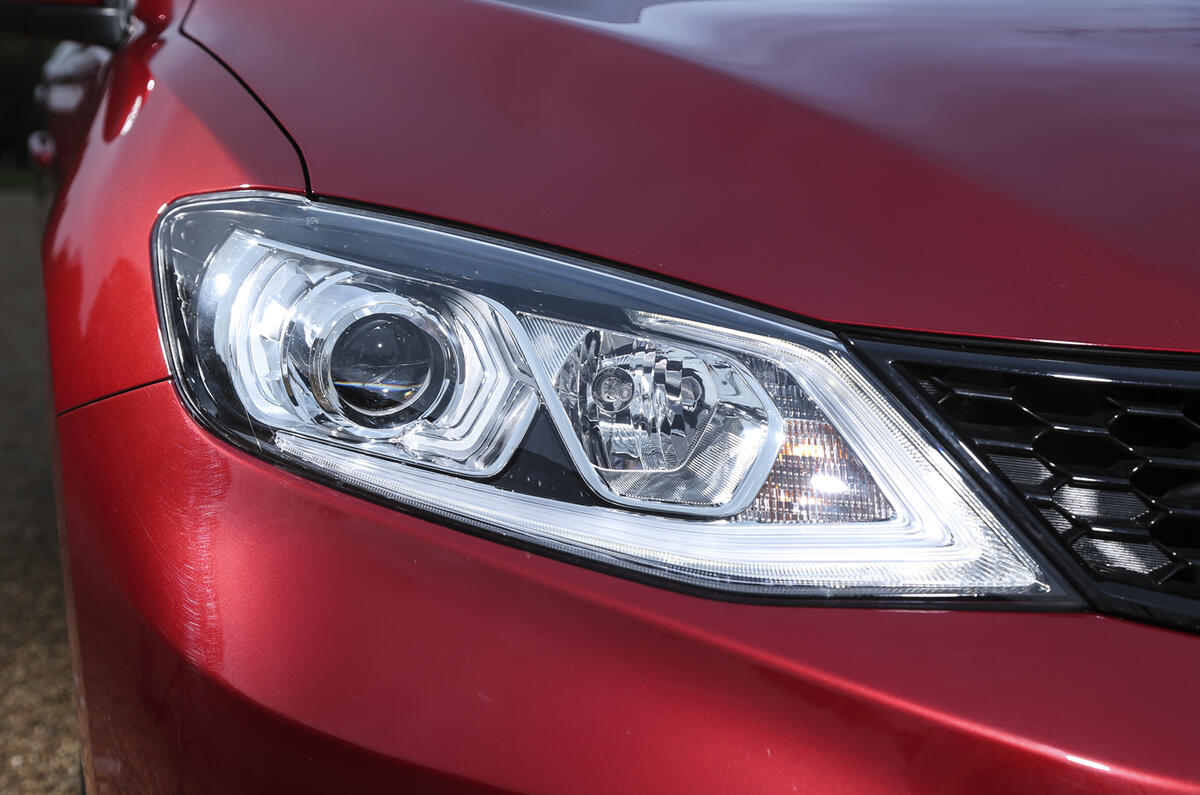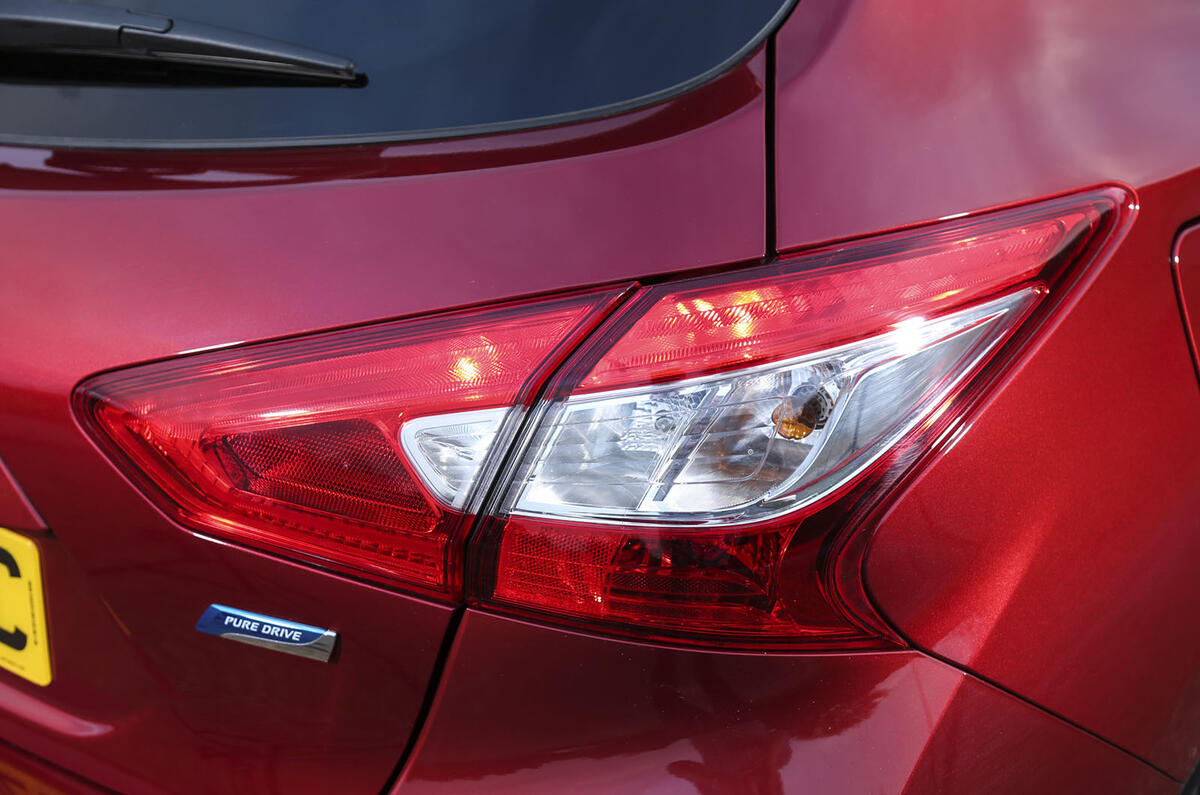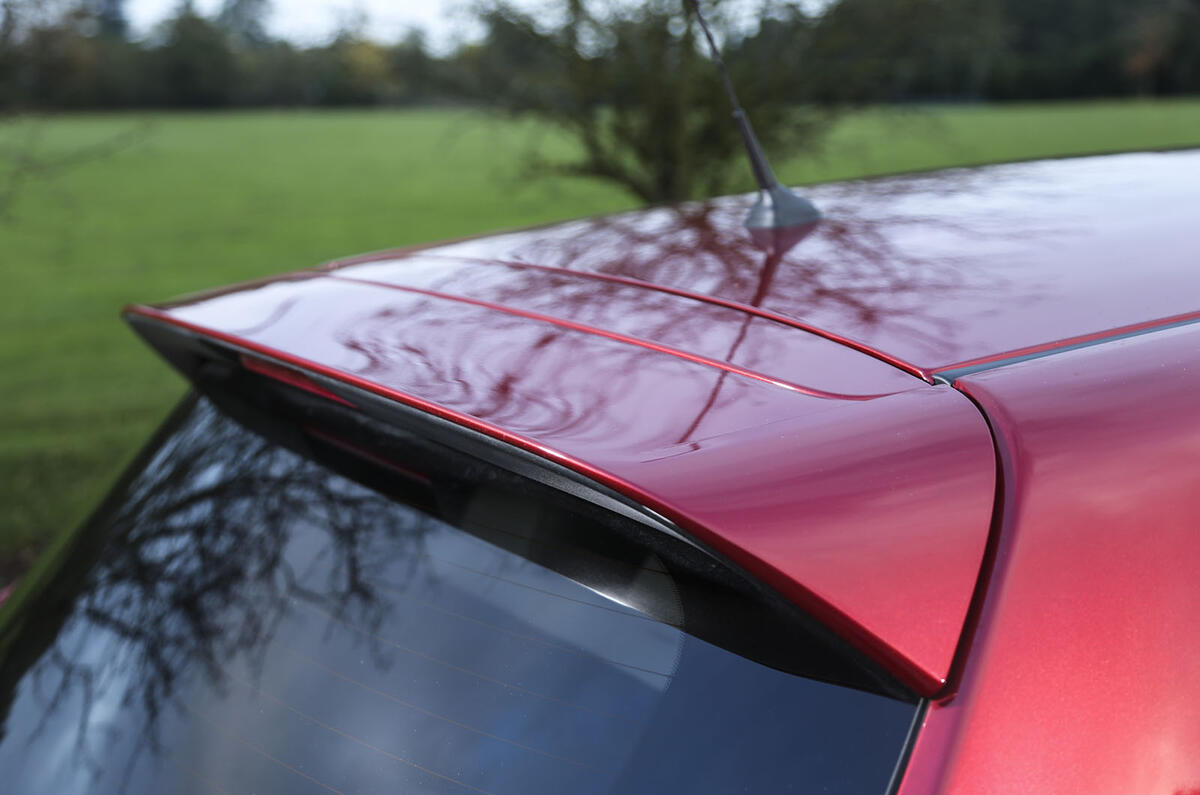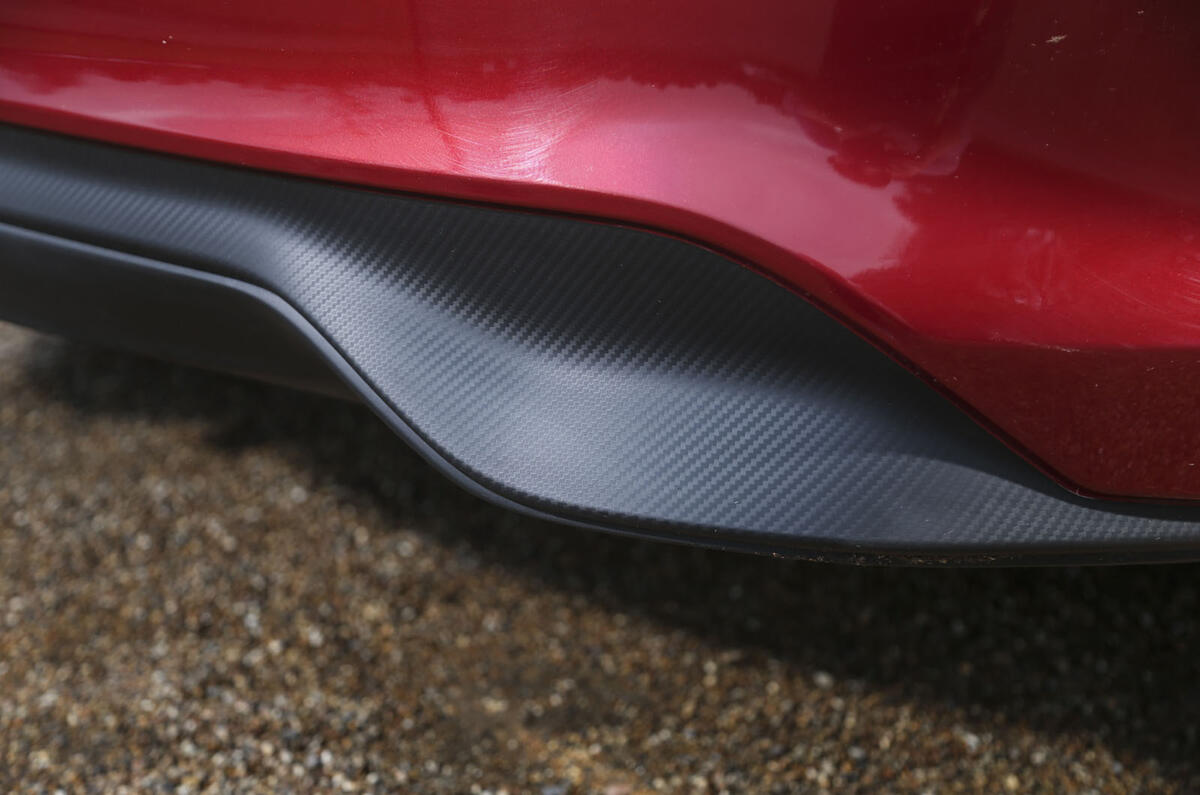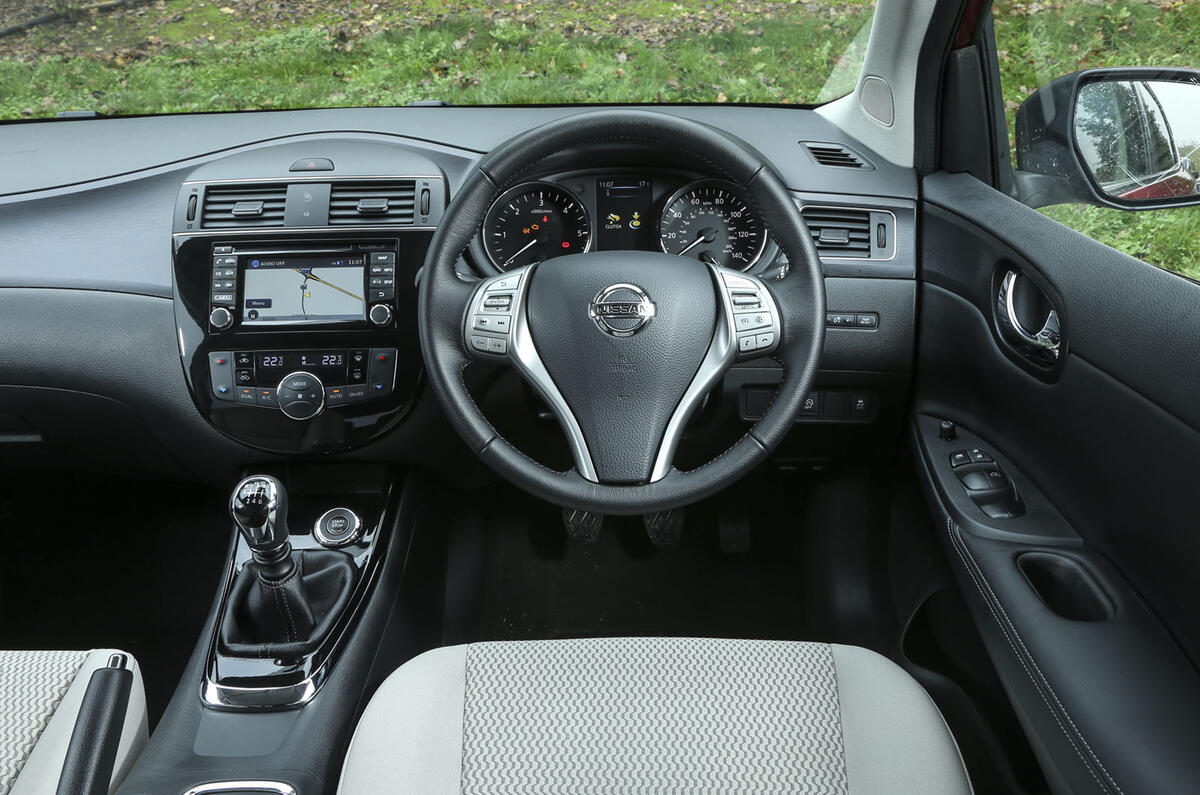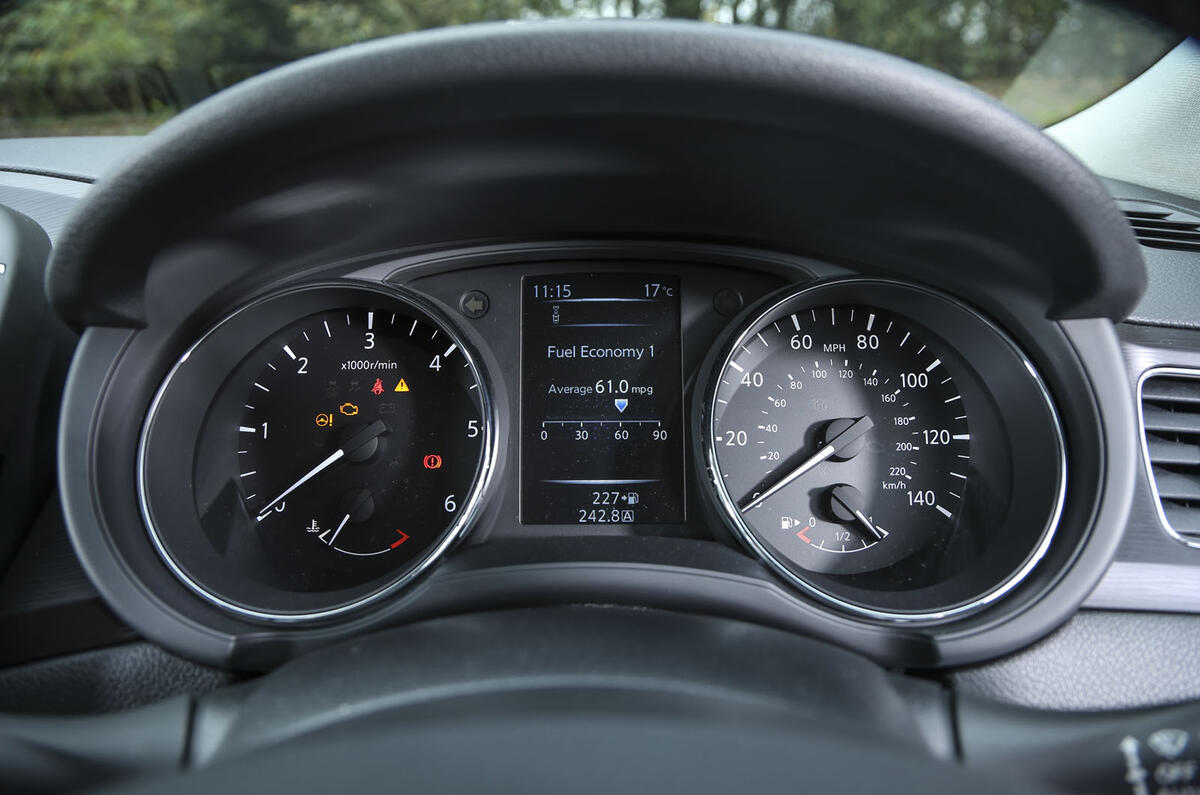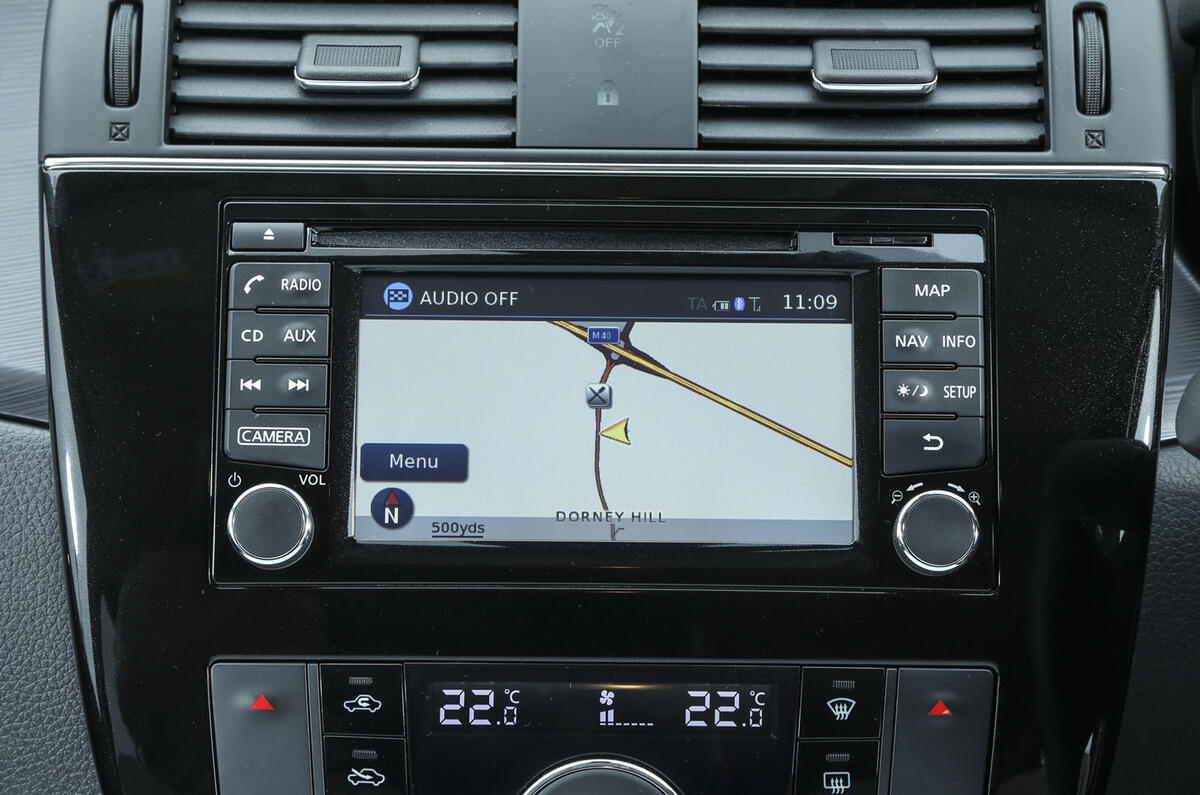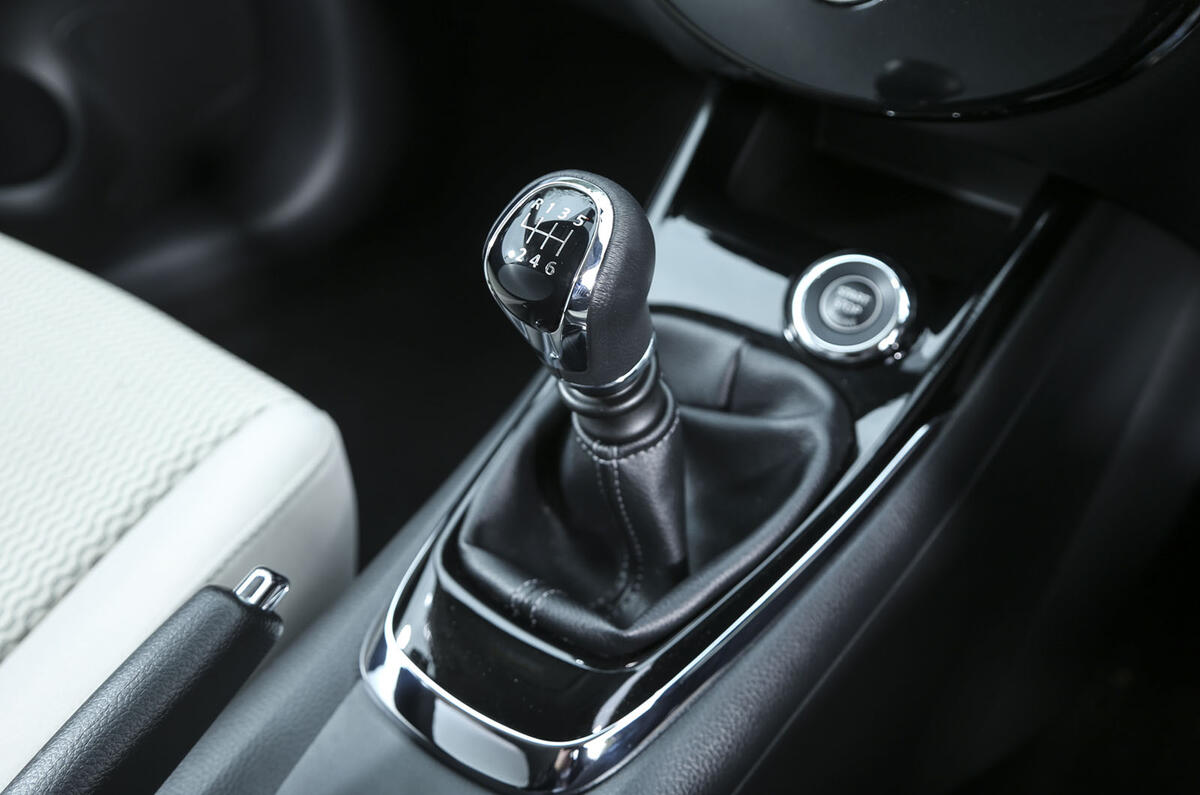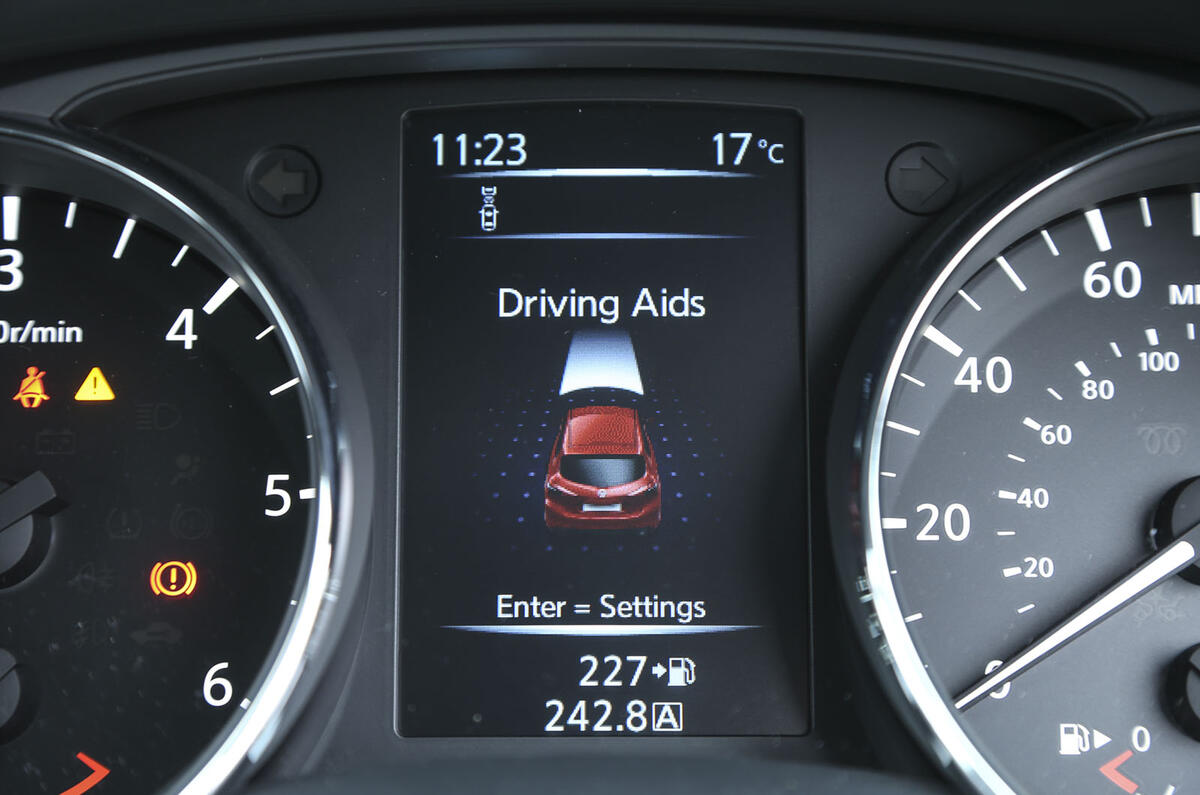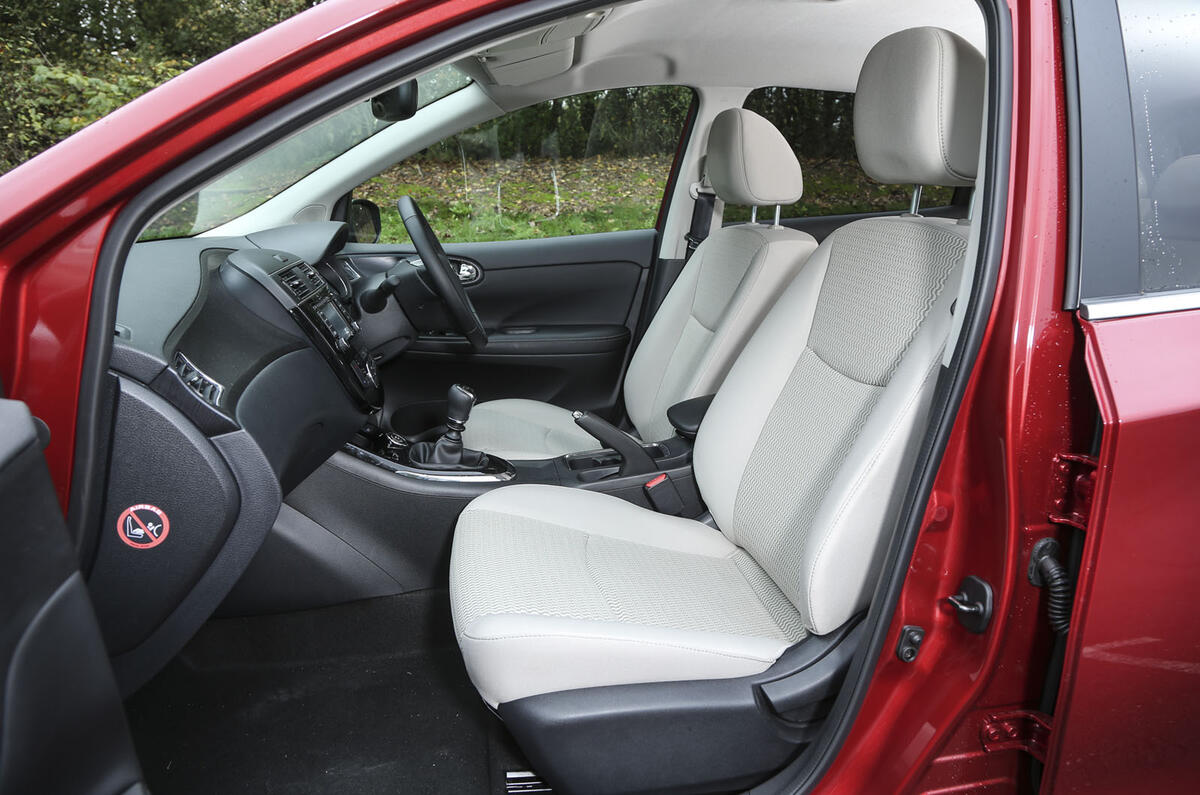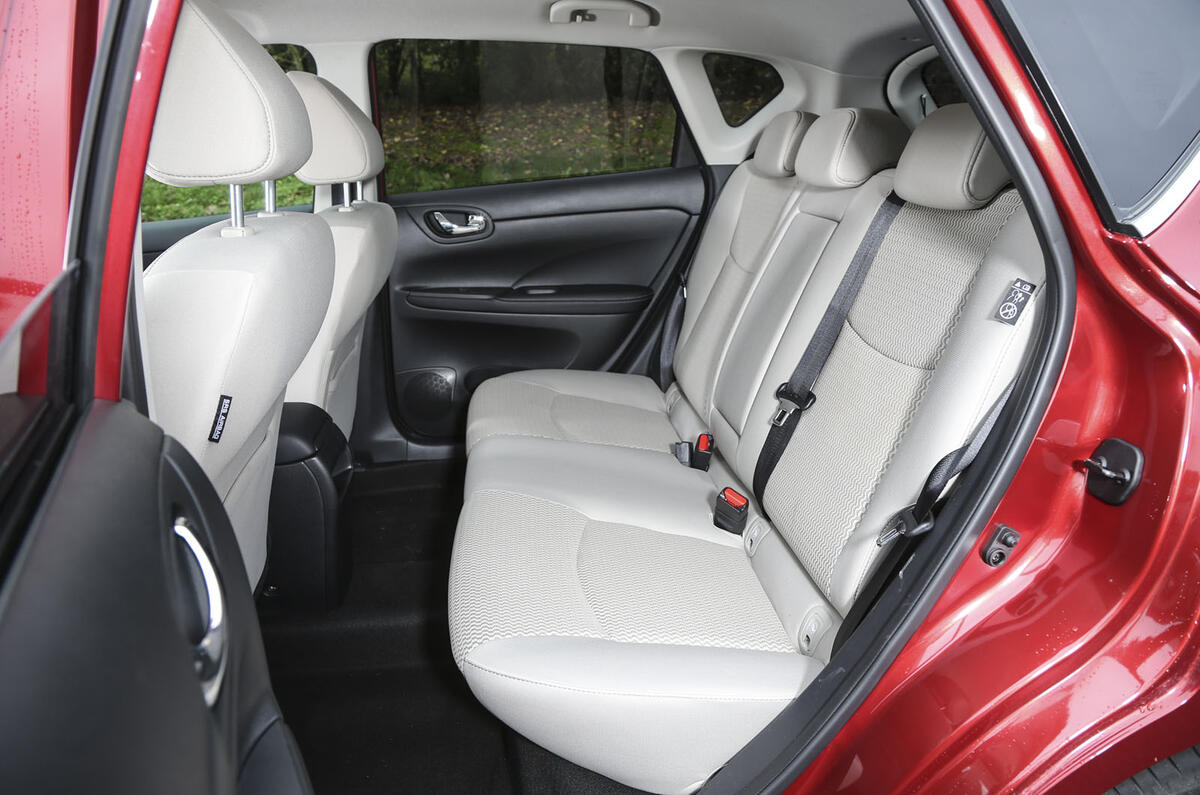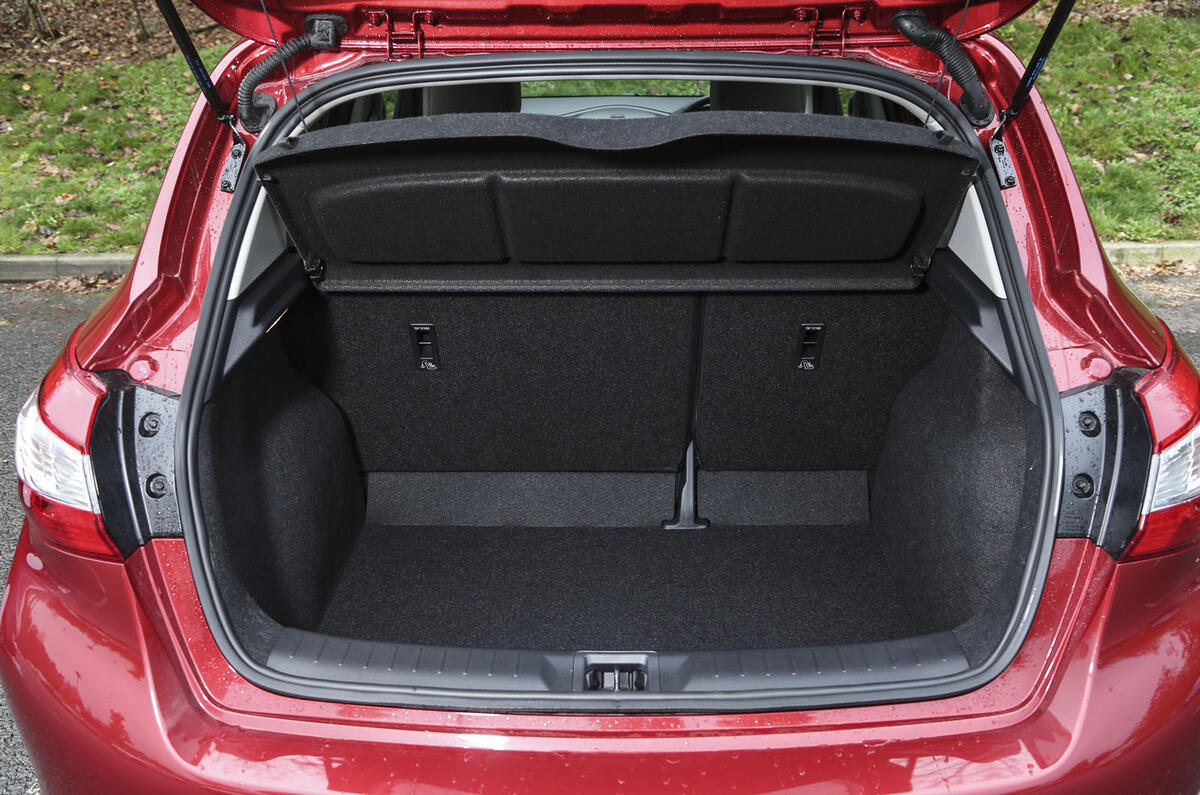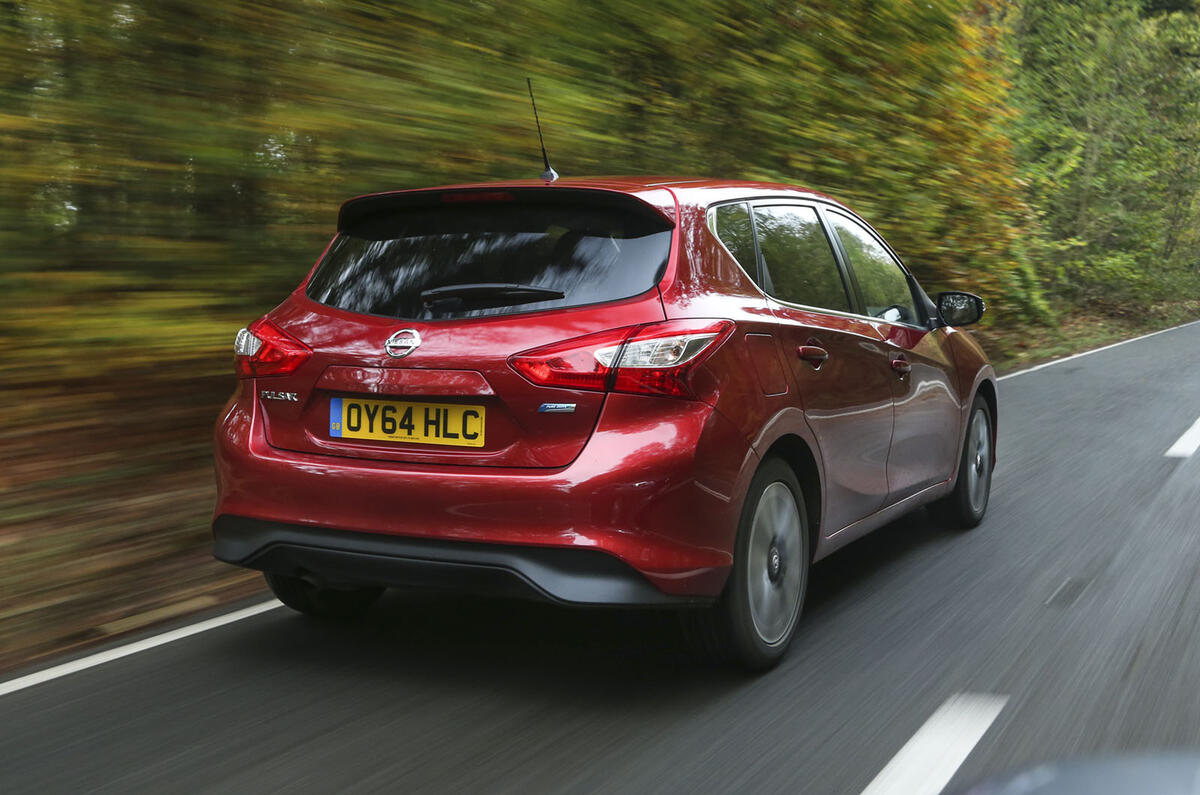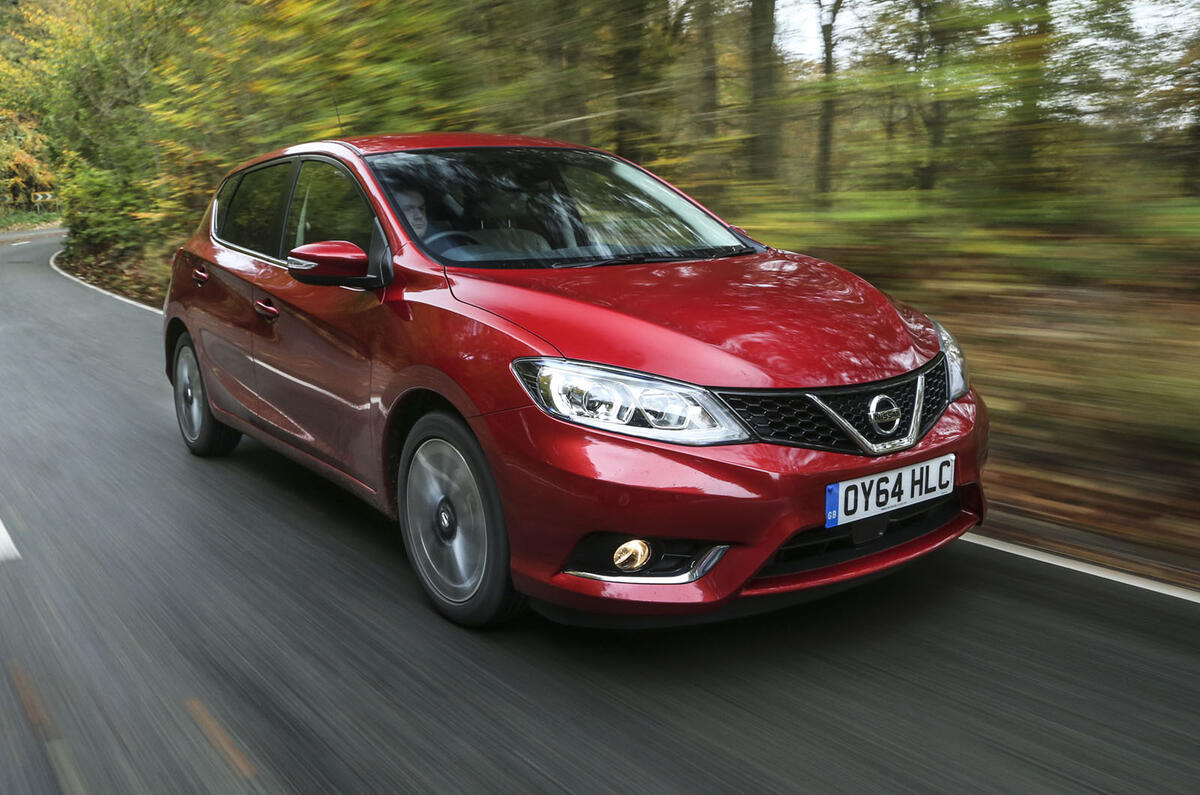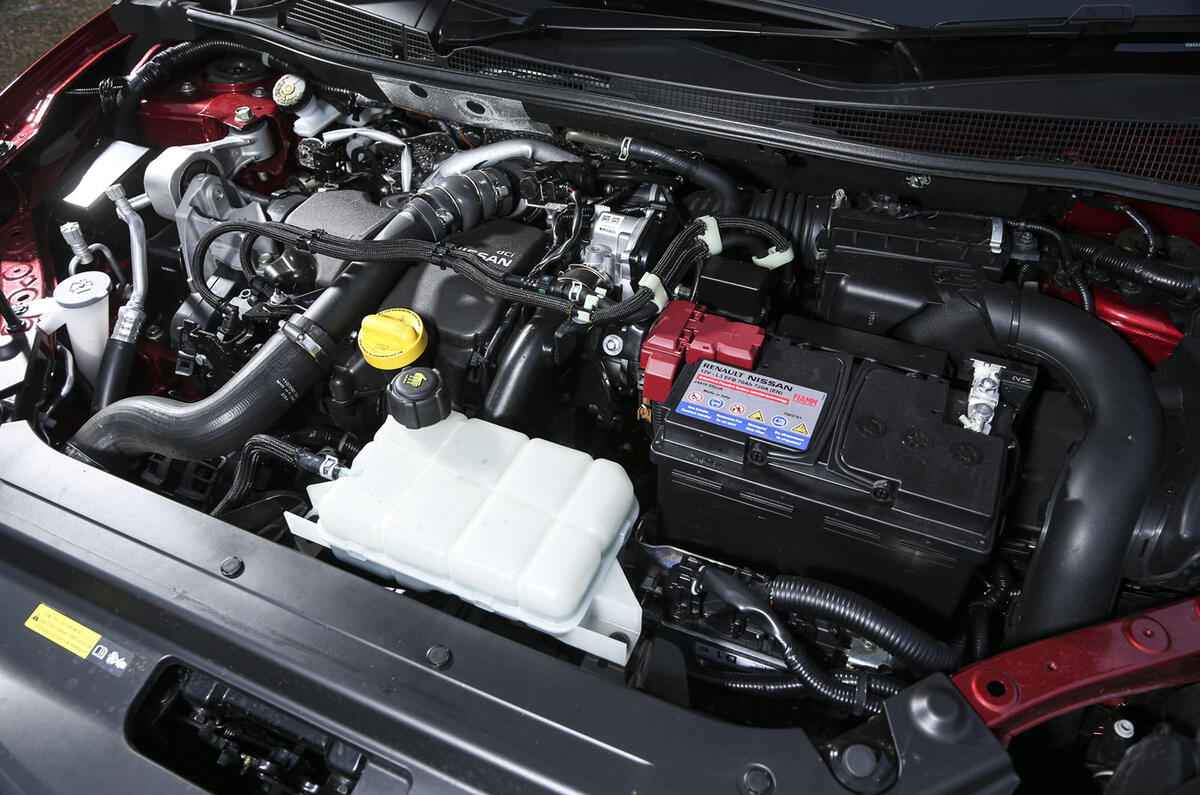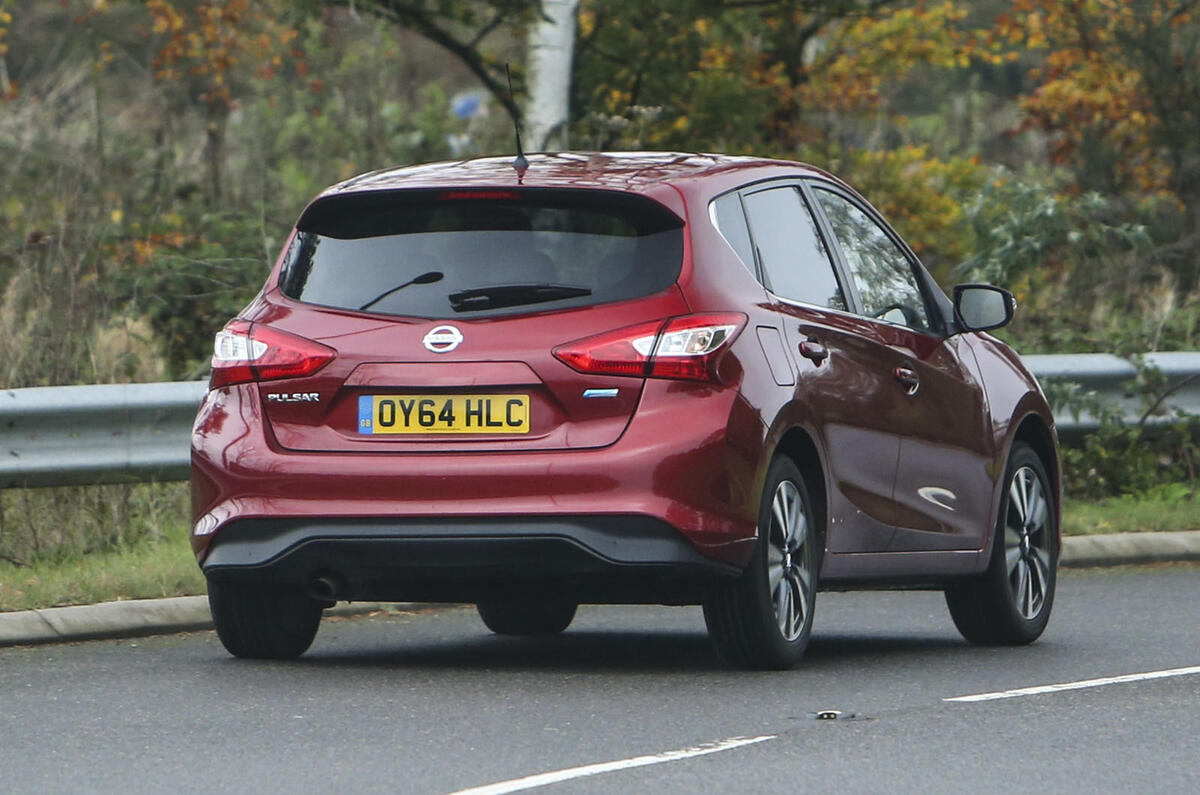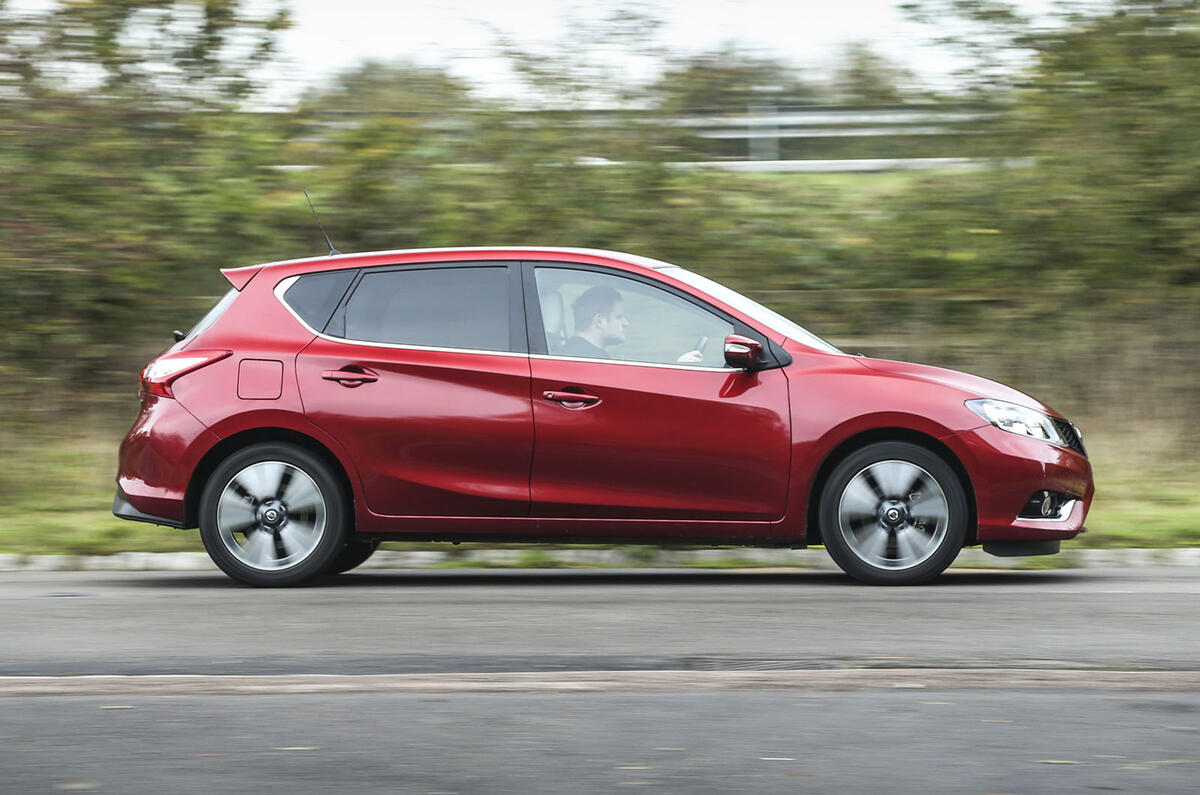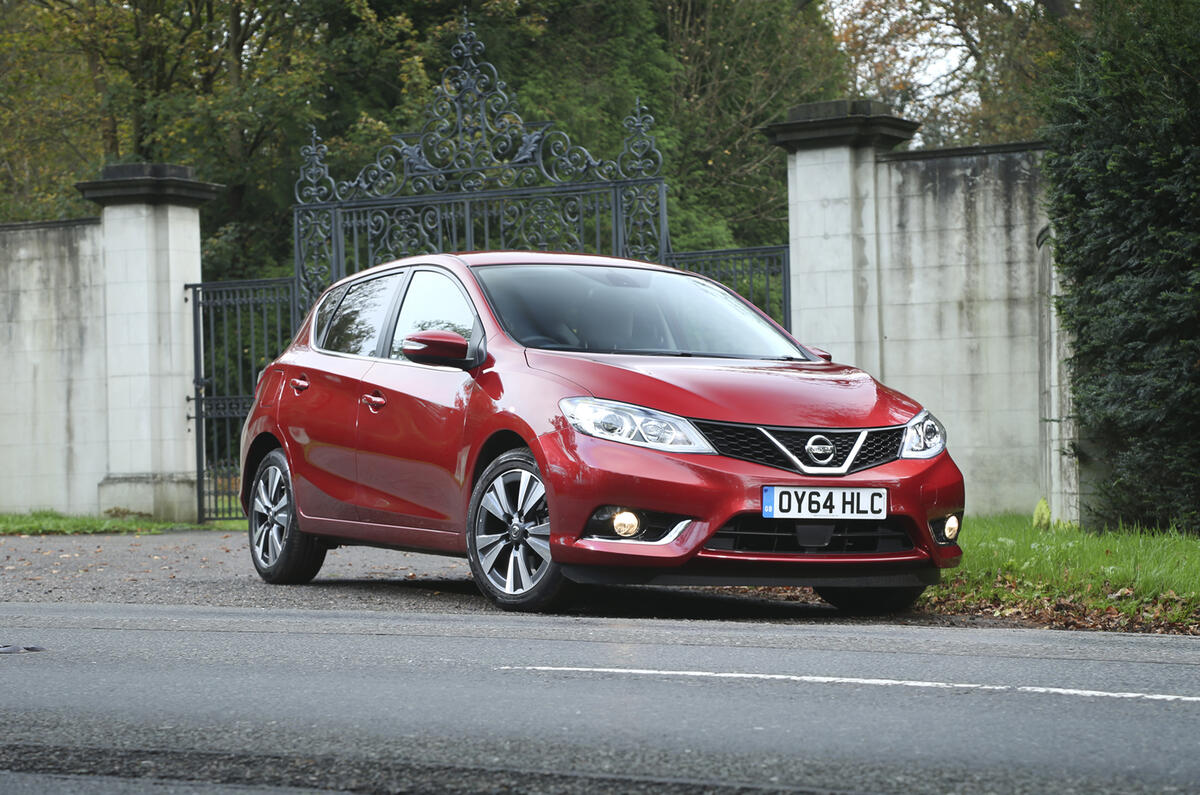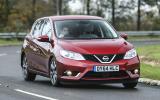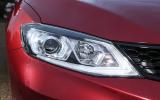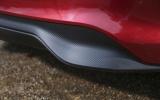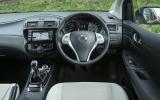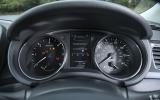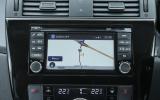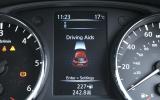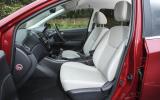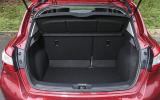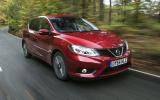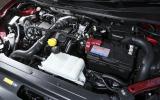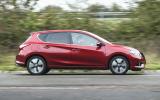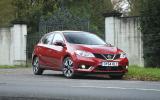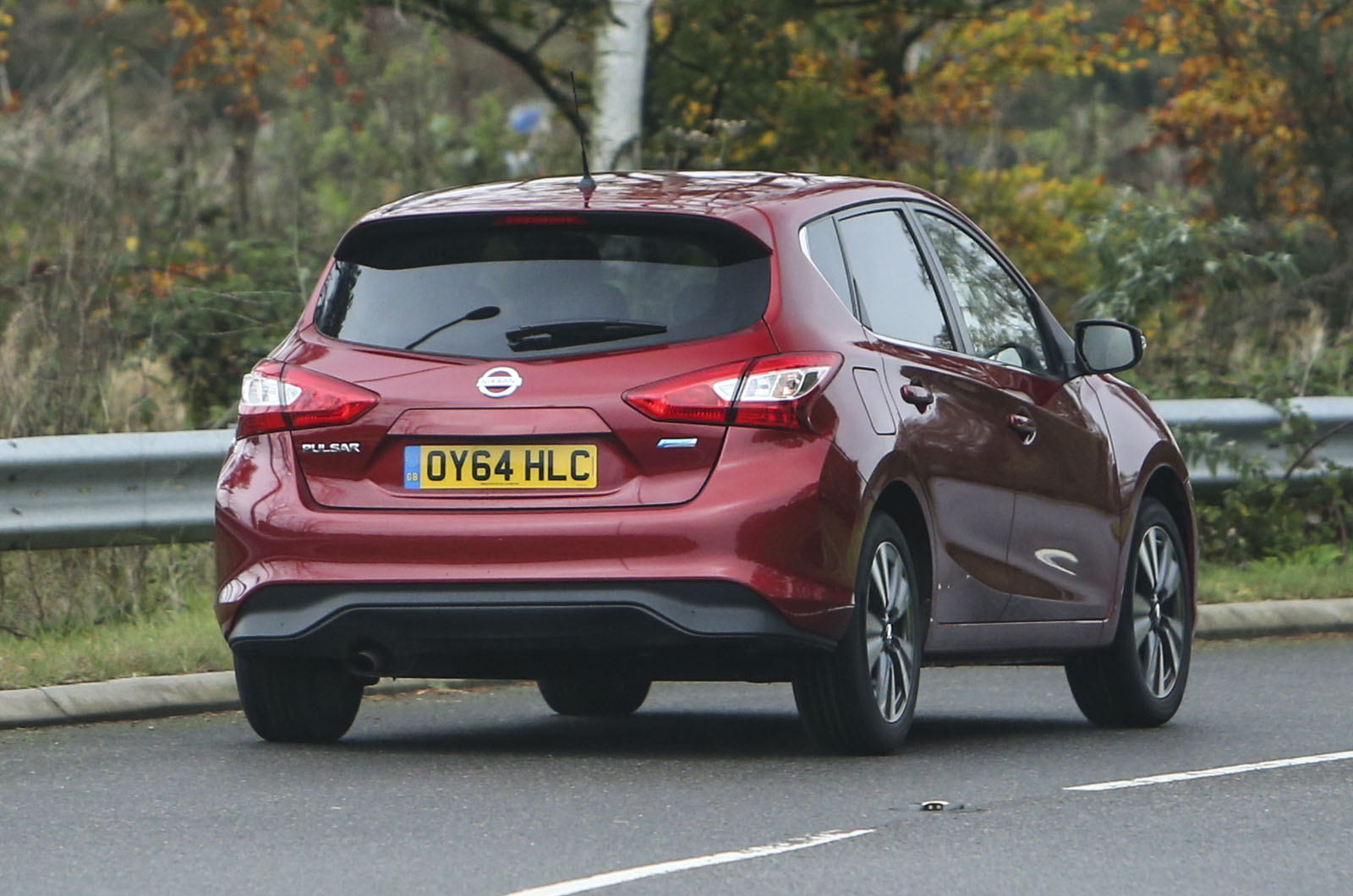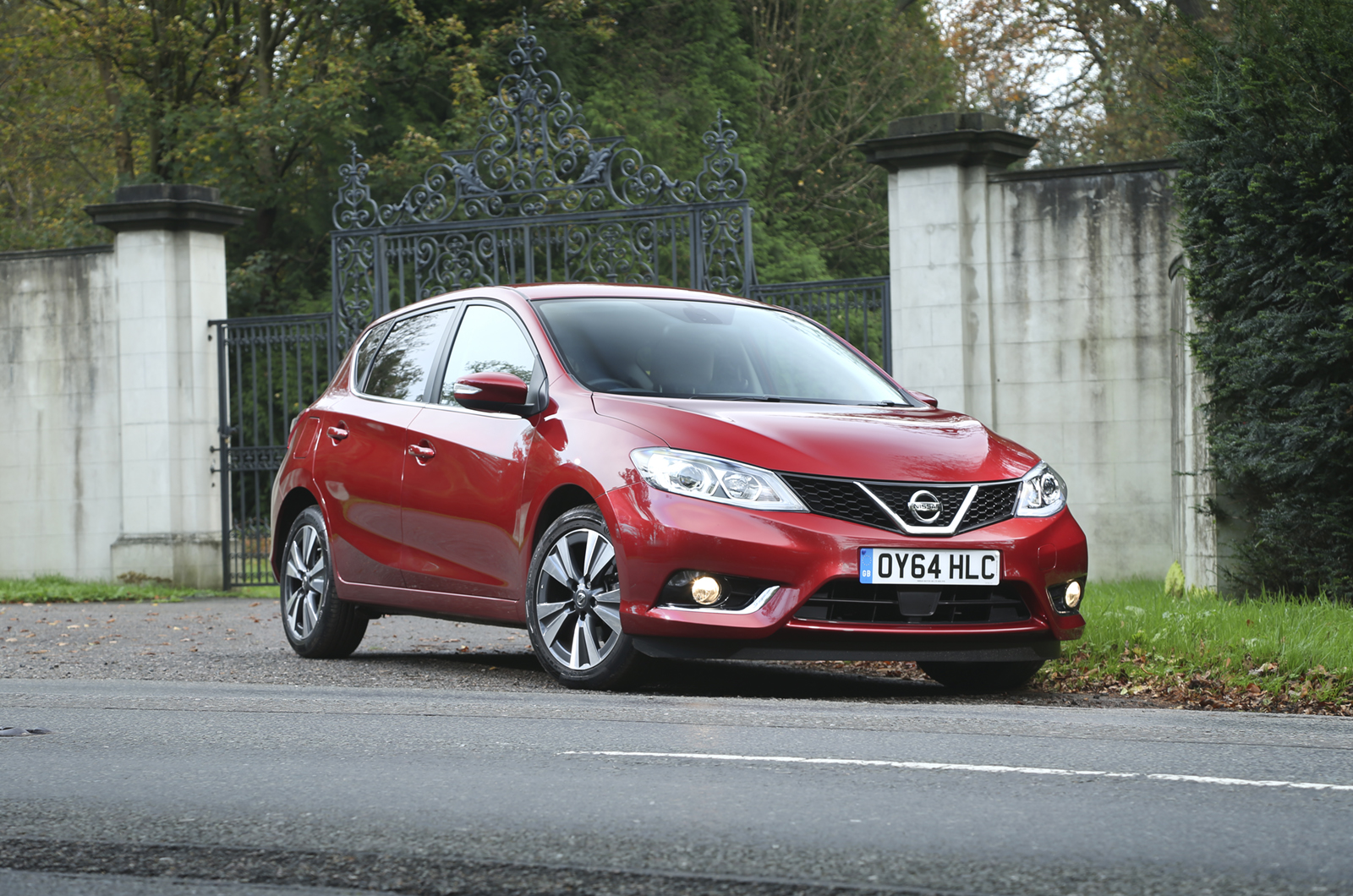To see where your money is going, get into the Pulsar through the rear doors. This is a plus-size hatchback, where you marvel at the space between your knees and the seat ahead of you rather than measure its closeness.
It’s a similar (if not quite so revelatory) tale overhead, where the roofline has been kept away from all but the tallest occupants. The attraction of this is all pretty relative while on test – it’s not as if practically every rival isn’t capable of seating four adults - but filled with a full-size family, the appeal of every extra centimetre would be apparent.
It is easier to imagine any of the Pulsar’s competitors making you feel more cosseted up front in the driver’s seat. Functionally, there isn’t much wrong. The controls are all easily found, the steering wheel adjusts, the instrument cluster is legible, Nissan’s familiar multimedia system makes sense and even the start-stop button is easy to find.
So what’s the problem? Well, the conservative design brief delivered to the exterior styling department has proven contagious, because there’s a similar dearth of imagination at work in the cabin.
The dashboard’s hollow-feeling plastic construction would be forgivable if it weren’t arranged with such a perfunctory splat. The centre stack is raised, but only with the enthusiasm and shapelessness of a sunken blancmange. There’s a cubbyhole beneath, although it’s in so much perpetual shade that you’ll want to put a hand in it before you trust its inky depths with your phone.
The result isn’t crude, but the obvious lack of sophistication means that the conventional welcome into the cabin of a modern hatchback – one that speaks to the cleverness and presentational quality now expected of every expensive purchase – is conspicuous for its absence.
You won't be left wanting for equipment though, with even the entry-level Visia and Visia Limited Edition models featuring air conditioning, a 5-inch TFT media system, USB and Bluetooth connectivity, cruise control and electrically adjustable door mirrors. Step up to Acenta and the likes of forward emergency braking, dual-zone climate, keyless start and entry and automatic lights and wipers are added.
Opt for an N-Connecta specification Pulsar and you'll be rewarded with creature comforts including a DAB radio, a reversing camera, LED headlights, a part-leather trim and a 5.8-inch sat-nav and entertainment system. Lastly, flagship Tekna models benefit from Nissan's smart surround-view camera system, heated leather seats, leather upholstery, LED headlighst and a myriad of safety upgrades including blind spot and lane departure warnings.
The Pulsar shares the Nissan Qashqai’s multimedia system, which is good because it’s generally one of the better units offered in a mainstream model. The screen is not vast compared with those of some rivals, but it responds to touch well enough and the dial to the right can be used to navigate around some functions.
Just as importantly, the menu system is set up logically, and its simple interface means you’re unlikely to reach a place where you’re lost for the right button to push. With that in the bag, most functions — including the connection and operation of a mobile phone — fall into line easily enough.



